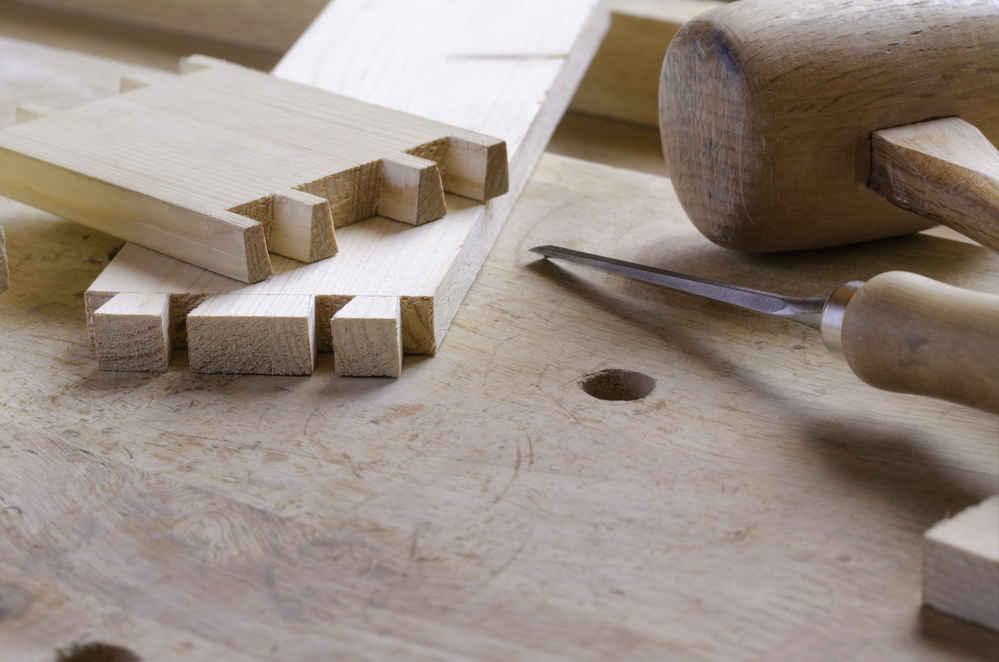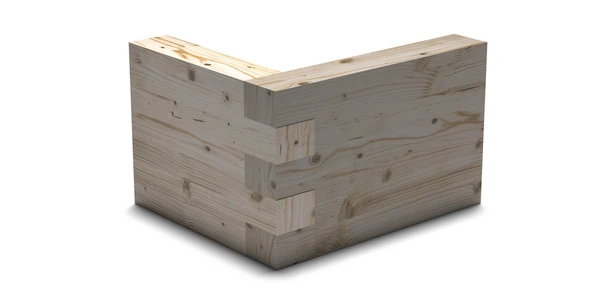Dovetail joint vs Box joints
Dovetail joints and box joints are almost similar to separate, making the selection process difficult. However, you still need to pick one from the list. The differences lie in cuts, fingers, and strengths. Pick one that matches your needs. Below is a review of both joints.
Dovetail joint
Dovetails are a joinery feature that makes accents to drawers, cabinets, accent lines, and handmade boxes or furniture pieces. It is a strong joint that is resistant to pulling apart. The joint has a variety of designs and sizes available. These joints range from large drawers to small boxes.
Dovetails can meet specific needs when it comes to size and spacing. Custom-made dovetail joints duffer in angles and depths depending on the project. They use several materials, including hardwoods, softwoods, plywood, and metals. It requires special tools to cut the dovetail joint, which can be expensive.

Dovetail joints join two pieces of wood at a right angle, creating corner joints, box joints, and other types of joins. There are two types of dovetail joints: through dovetails and half-blind dovetails. A through dovetail is where the end grain of both boards is visible when the joint is assembled. After it has glued, some pins and tails take on permanent hold. There is no need for nails. It withstands a lot of force.
Dovetails are in box construction and covered by a veneer. Woodworkers use a half-blind dovetail when they do not want the end grain visible from the front of the joint. The tails fit into mortises at the ends of the board. That is the front of the item, hiding its ends.
Half-blind dovetails fasten drawer fronts to drawer sides, making them an alternative to attaching false fronts to drawers constructed using dovetails. Dovetail joints can be loose or tight-fitting, whereas tight-fitting dovetail joints are more difficult to construct but stronger than loose-fitting joints. Loose-fitting joints are easier to construct but are not as strong as tight-fitting joints.
Pros
- Strong
- Attractive
- Solid
- Reliable
- Multiple types of dovetail
Cons
- They can be difficult to mark out and cut
Box joints
The box joint is a solid wood corner joint for joining wider slats, boards, and wood panels. Cut parallel, open visible joints, modern and compared to the dovetail joints.
The advantage of a box joint is, it can be cut on the table saw with a dado blade. Once set up, it becomes faster. You can cut a stack of workpieces all at once. When making several box joints, the process becomes quick. Use a jig with enough movement to make joints. You can test the joints by pressing the box apart from the inside.

There are a few ways to cut box joints, and you can do it with a dovetail saw and chisel. Pick a width for the fingers that will divide evenly into the width of the stock. If your wood stock is six inches wide, a half-inch wide finger will allow twelve fingers total, six on each piece of stock. Wood pieces of wood with different thicknesses are joined together.
Box joints are strong and attractive. They do not require special tools, only a table saw, miter gauge, and a shop-built jig.
Pros
- High stability
- Quick to make
- Versatile
- Attractive
- Ease of use
Cons
- Visible joints
Features
Dovetail joint
Pins and tails
Pins and rails are two parts of a dovetail joint. The tails look like the tail of a dove. The pins are on the opposite board and fit in between the tails to create a joint. The joint is strong enough not to be pulled apart in at least one direction. Add glue, and clamp the joint together well, so it will not pull apart in the other direction.
Gluing area
The dovetail joint has a large gluing area, which allows holding together even without glue. A large area for glue coverage with the joinery gives a durable and long-lasting joint.
End grain
In the joint, the end grain of both boards is visible when the joint is assembled. That is a thorough dovetail, unlike when making a half-blind dovetail joint https://www.wagnermeters.com/moisture-meters/wood-info/end-edge-face-grain-differences/.
Box joints
Pins and slots
Box joints feature alternating pins and slots. The pins on mating pieces interlock like tiny fingers, creating a glue surface for a strong joint. For it to be strong, you need a snug, accurate fit. For a good fit on a box joint, get the width of the pins matches the width of the slots. All you need is a jig that uses a small key.
Box joint jig
To cut box joints with a table saw, you need a dado set, a miter gauge, and a jig. The jig can be a standard one. Use a pair of auxiliary fences and a hardwood key.
Key
Once the jig is set up, cutting the box joints becomes automatic. The size and position of this key must be perfect. The key fits into a notch, meaning its width and height are determined by the dado blade that cuts the notch. The width of the dado determines the spacing of the box joints. The height of the dado determines the length of the pins.
The position of the key determines whether the pins will fit or not get the key close to where it should be, and use an identical-sized spacer to position it.
Tooth spacing
The choice of the routing template depends on the thickness of the wood used.
What could have been better
Dovetail joint
- It could have been easy to measure and cut.
Box joints
- The joints could have been invisible.
Key Differences
- Dovetail joints feature trapezoidal profile cuts, like the tail of a dove, that only slide together in one direction. This design looks like a puzzle piece, whereas box joints have rectangular pins that can slide together in any direction.
- Box joints are stronger than through dovetails.
- The dovetail has fewer fingers than the box joint.
- The box joint is strong in both directions, whereas the dovetails are for pulling from one piece, but not the other.
Similarities
- Both require fewer tools.
- Both are joint methods.
The Verdict
A box joint is similar to a dovetail, but the difference is that the fingers in the box joint are rectangular rather than dovetail shaped. There are a few ways to cut box joints, like a dovetail saw and chisel. For the strongest joints in kitchen cabinetry construction, the dovetail joint works better. J am sure you have picked your best method.
- Grain and Sheen: Teak Oil versus Danish Oil Uncovered - January 10, 2024
- The Cherry on Top: Crafting the Perfect Cutting Board - January 9, 2024
- Polyurethane Water-Based vs Oil-Based: Choosing the Right Finish - January 8, 2024